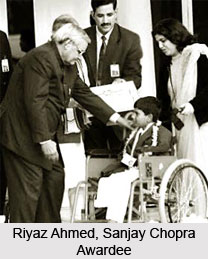Sabha was a village assembly where the members would meet and discuss social and political issues. It was an important political unit. It was generally attended by noble people. It was considered as the national tribunal. This term has been mentioned in Rig Veda. Members of the sabha performed all the functions. A sabha eventually assumed a patriarchal and an aristocratic nature. Earlier women also attended sabhas. However it stopped in the later Vedic age. The village head called Gramini attended the meetings of the Samiti. The sabha was attended by priests. However the Vedic literature does not have much information regarding the clan character of sabha. It reflects the presence of people who belonged to a higher social rank.
Original clan nature of sabha was determined in the Rig Vedic age. Dispossessed and impoverished people could not be a part of sabha. Power belonged to those who owned horses and chariots. Sabha was the advisory body of King and was dependent on their advice and counsel. According to Rig Veda Sabha is a gambling assembly. Sabha was also used for amusements like dance, music. It was also associated with witchcraft and magic practices. It also discussed pastoral affairs. Religious activities were also talked about in the sabha. It is considered that its members invoked Lord Indra to protect the sabha. Whenever they had a meeting they performed a sacrifice.
Political and administrative functions were also exercised by the Sabha. There are evidences that indicate that the sabha also executed judicial functions. It has been asserted that the judicial functions were not exercised by the entire sabha but instead by the standing committee of the sabha. The judicial nature of the sabha existed later too as it has been mentioned in the Jataka too. There are also references to the royal presence in the sabha. There are evidences that the king attended sabha. As per Chandogya Upanishad the King maintained his own sabha. The king considered sabha`s advice to be supreme. Sabha was a permanent body that comprised of selected men.
This article is a stub. You can enrich by adding more information to it. Send your Write Up to content@indianetzone.com






